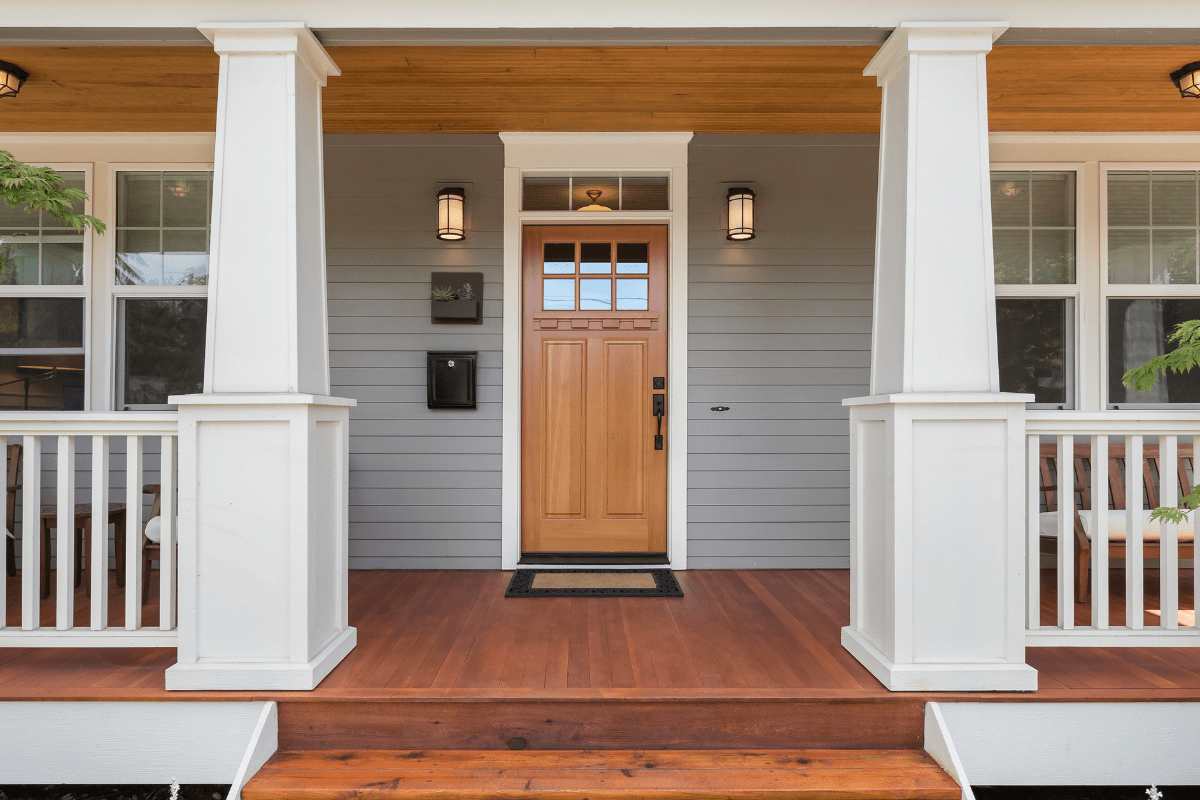Let me guess… you just opened your latest utility bill and briefly considered selling a kidney to keep the lights on? Welcome to homeownership in Iowa, where Mother Nature treats your house like her personal stress ball, and property taxes feel like they're funding a secret space program.
The good news is that Iowa homeowners can slash their annual costs by 20-40% without living like pioneers or winning the lottery. I've spent way too much time digging through rebate programs, tax credits, and weatherization tips to bring you the stuff that actually works. Not the "turn off lights when you leave the room" obvious advice, but the real money-saving secrets hiding in plain sight.
Start with the easiest wins (because who doesn't love instant gratification?)
Here's the thing about saving money on your home: the biggest opportunities often require zero investment. Seriously, you could save over $1,000 this year just by filling out some forms and adjusting your thermostat. Let's start with the boring but lucrative world of property taxes.
Property tax relief that most Iowans miss
Iowa offers several property tax breaks that people just… forget to claim. The Homestead Tax Credit gives you a reduction on the first $4,850 of your home's actual value. All you need is to own and live in your home as your primary residence. File once by July 1st, and you're set for life. It's like a permanent coupon for being a responsible adult.
If you're 65 or older, congratulations! You've unlocked bonus savings with an additional $6,500 taxable value exemption. That's about $109 back in your pocket every year, which might not sound like much until you realize it's basically free money for aging gracefully.
Veterans get an even sweeter deal with a $4,000 taxable value exemption (recently bumped up from $1,852 because someone finally realized veterans deserve better). And if you're a disabled veteran with 100% service-connected disability? Your property taxes can be completely waived. That's thousands of dollars annually, folks.
The Elderly and Disabled Credit offers up to $1,000 yearly if you qualify. Income limits are $26,219 for ages 65-69, or 250% of the federal poverty level if you're 70+. Not exactly rolling in dough? This credit's for you.
The thermostat trick that actually works
Remember when your dad would guard the thermostat like it controlled nuclear launch codes? Turns out he was onto something. Just not in the way he thought.
Winter settings should be 68°F when you're home and awake, then drop it to 60-65°F when sleeping or gone for more than two hours. Each degree saves 1-3% on heating bills. Set it back 7-10 degrees for eight hours daily, and you'll save about 10% annually. On Iowa's average heating bill, that's $258 staying in your bank account instead of floating away as toasty air.
Summer's the opposite game. Keep it at 76°F when home, 83°F when away. Yes, 76 might feel warm at first, but your body adjusts faster than your credit card recovers from utility bills. Pro tip: controlling humidity between 30-50% makes higher temperatures feel comfortable while saving an extra 3-6% on cooling costs.
Level up with smart thermostats (they're not just for tech nerds anymore)
Okay, so you've mastered manual thermostat control. Time to let robots do the work while you collect rebates that basically pay for the upgrade.
MidAmerican Energy customers can score up to $100 off smart thermostat purchases, plus $40 annually through their SummerSaver program. That's right, they'll pay you to let them occasionally adjust your AC during peak times. You probably won't even notice.
Alliant Energy goes harder with their rebate game:
- $50 off the thermostat
- $50 just for signing up
- $25 per season in their Smart Hours program
That's potentially $150 in your first year, plus the thermostat typically saves 8% on heating and cooling. We're talking $100-200 in annual savings after you've already pocketed the rebates. It's like getting paid to save money, which should definitely be illegal but thankfully isn't.
Weatherize like your wallet depends on it (because it does)
Here's where things get hands-on, but don't worry… I'm not suggesting you become Bob Vila overnight. Basic weatherization can save $100-200 yearly for about $200-500 in materials. That's a payback period shorter than most Netflix series.
DIY weatherization that won't end in disaster
Start with the obvious air leaks around windows and doors. That tube of caulk at the hardware store? It's basically liquid money. Weather stripping is even easier… if you can operate scissors and peel stickers, you're qualified.
For the overachievers, consider these DIY projects:
- Outlet gaskets (stop air leaks through electrical outlets)
- Door sweeps (block that arctic breeze under doors)
- Attic hatch insulation (because heat rises, remember?)
- Plastic window film (temporary but effective)
Can't tell where air's leaking? Light an incense stick and watch for smoke movement around windows, doors, and outlets. It's like ghost hunting, except you're hunting expensive drafts.
When to call in the pros
Some things are worth paying for, like dental work and energy audits. Green Iowa AmeriCorps offers FREE professional energy audits with BPI-certified auditors. They'll find problems you didn't know existed and tell you exactly what to fix first for maximum savings.
Navigate Iowa's utility rebate maze (spoiler: it's worth it)
Iowa utilities are practically throwing money at homeowners through rebate programs, but their websites look like they were designed to hide treasure. Let me decode this for you.
MidAmerican Energy's running a $355 million efficiency plan that covers up to 70% of equipment costs. They offer instant discounts at purchase for HVAC equipment and will pay you $50 to haul away that electricity-guzzling fridge from 1987. Their Time-of-Use rates can save even more if you can shift usage to 10 PM – 8 AM. Night owls and electric vehicle owners, this one's for you.
Alliant Energy matches these programs with their own marketplace for instant discounts. Both utilities require rebate applications within 90 days of purchase. Under $500? You get a prepaid card. Over $500? They mail a check like it's 1995, but hey, money is money.
The weatherization assistance jackpot
If your income's at or below 200% of federal poverty guidelines, the Iowa Weatherization Assistance Program is your golden ticket. They provide:
- Professional insulation installation
- Air sealing by actual experts
- Heating system upgrades
- Safety inspections
Average savings? $467 annually. Forever. The catch? About 80,000 Iowans apply for 2,000 available slots each year. Apply anyway… worst case, you're in the same position. Best case, you get thousands in free improvements.
Know when to DIY vs. hiring Iowa contractors
I get it, YouTube University makes everyone feel like a contractor. But some jobs are worth paying for, especially when doing it wrong costs more than doing it right.
Contractor costs in Iowa (brace yourself)
Here's what you're looking at for professional work:
- HVAC contractors: $100-250/hour
- Furnace replacement: Average $4,801 for gas systems
- Roofing: Around $15,000 in cities like Cedar Rapids
- Foundation repair: $2,200-8,100 (mud-jacking is cheapest at $550-1,450)
- Window replacement: $550 per window average
Spring scheduling saves 10-15% on most outdoor work because contractors are hungry after slow winters. Fall's their busy season, so prices jump accordingly.
Red flags to avoid contractor nightmares
Storm-chasing contractors appear faster than corn grows after severe weather. Legitimate contractors never demand:
- Full payment upfront (10-20% max)
- Cash-only transactions
- Immediate signatures
Always verify licenses at Iowa's contractor database. No license? No deal. The Better Business Bureau warns that unlicensed contractors cause most complaint cases, and Iowa requires HVAC professionals to be licensed for a reason.
Ice dams: Iowa's expensive winter surprise
Nothing says "Iowa winter" quite like ice dams destroying your roof and wallet simultaneously. These frozen nightmares form when poor attic insulation lets heat escape, melting snow that refreezes at cold eaves. With Iowa's 58-inch frost depth and schizophrenic freeze-thaw cycles, ice dams are practically inevitable without prevention.
Prevention costs $500-2,000. Ice dam damage? Try $5,000-15,000. The math here is pretty obvious.
Immediate prevention includes safely raking snow off your roof from the ground. For existing dams, professional steam removal runs $200-500. Long-term solutions focus on upgrading attic insulation to R-60 (R-38 minimum) and ensuring proper ventilation. Bonus: these improvements also cut heating costs by 15-20%.
Plan strategic upgrades for maximum ROI
When you're ready for bigger investments, some upgrades pay for themselves faster than others in Iowa's extreme climate.
The insulation investment that keeps paying
Current insulation recommendations for Iowa:
- Attic: R-60 (R-38 minimum)
- Walls: R-21
- Basement: R-13
Installation runs $3-5 per square foot but saves about 15% on heating and cooling. That's roughly $207 annually on average Iowa energy bills, giving you a 3-8 year payback period. Plus, your house stops feeling like a meat locker in January.
Windows: The 67% rule
New windows average $550 each in Iowa, with vinyl options at $400-500 installed. They reduce heating and cooling losses by 25-30%, saving $345-414 annually. Here's the kicker: window replacement recovers 67% of costs at resale. That's better ROI than most stock portfolios, plus you can actually see through them.
Heat pumps enter the chat
Modern cold-climate heat pumps now work in Iowa winters. Air-source systems cost $4,200-7,600 installed, with NEEP-certified models qualifying for $500/ton rebates.
Geothermal systems require $10,000-40,000 upfront but qualify for a 30% federal tax credit plus Iowa's 6% state credit. With 8-15 year payback periods and incredible efficiency, they're worth considering if you plan to stay put.
Your personalized action plan (because reading without doing is just entertainment)
Start this week:
- Apply for property tax credits before July 1st
- Adjust thermostats for immediate 10% savings
- Schedule a free energy audit
Within a month:
- Buy weatherization supplies ($200-500 investment)
- Check utility websites for current rebates
- Plan maintenance for off-peak season savings
Long-term goals:
- Stack utility rebates with federal tax credits
- Prioritize upgrades based on audit results
- Track actual savings to stay motivated
The bottom line (where your money stops leaking)
Iowa homeowners face unique challenges with extreme weather and high property taxes, but we also have below-average utility rates and generous assistance programs most people ignore. Every degree you adjust, form you file, and strategic improvement you make compounds into serious savings.
Start with the free stuff. Add the cheap fixes. Plan the big upgrades strategically. Before you know it, you'll be that neighbor everyone asks for money-saving advice. Just remember to act surprised when your utility bills drop like Iowa temperatures in January.
The key is starting somewhere, anywhere. Your house is either working for you or against you. Time to make it earn its keep.





